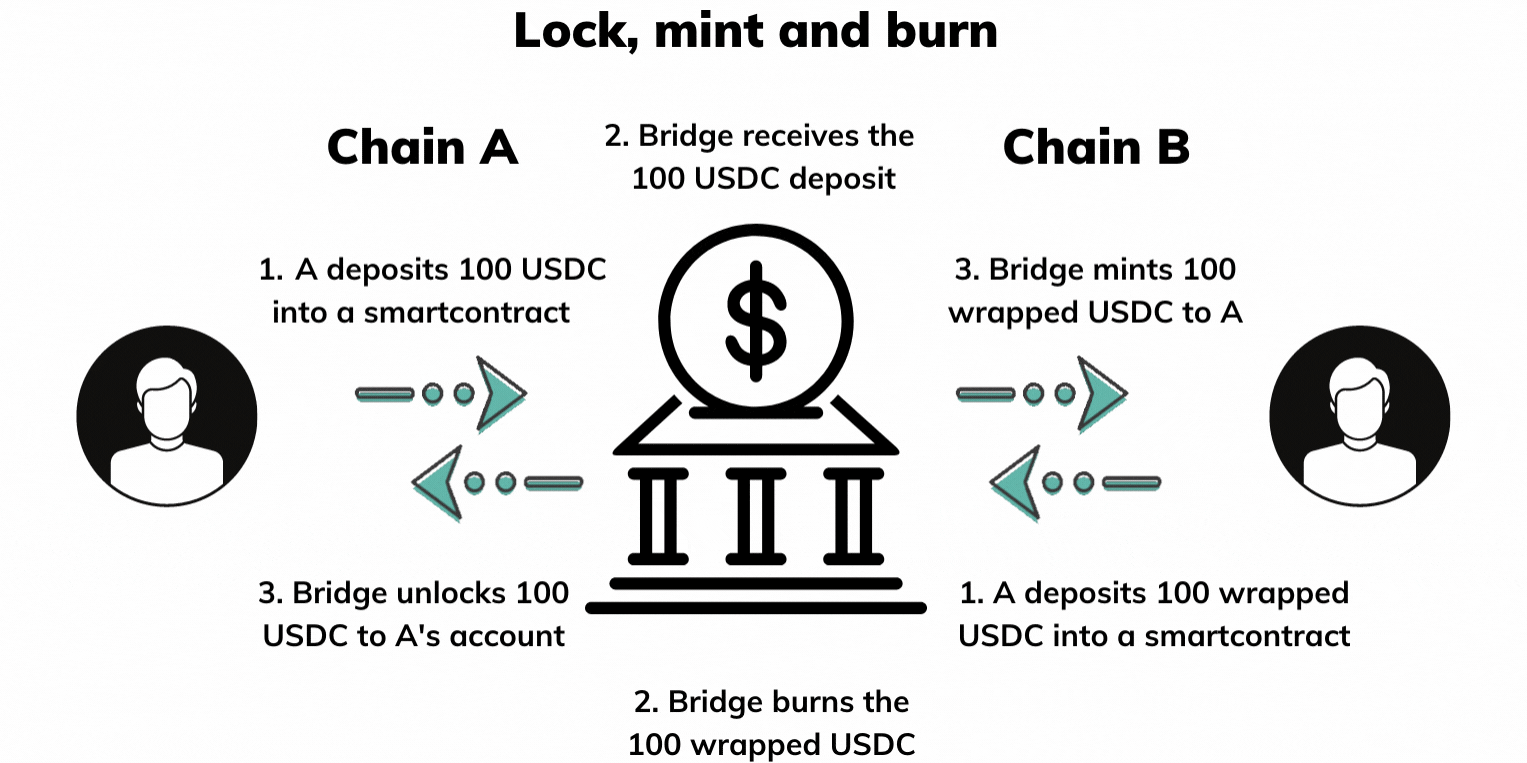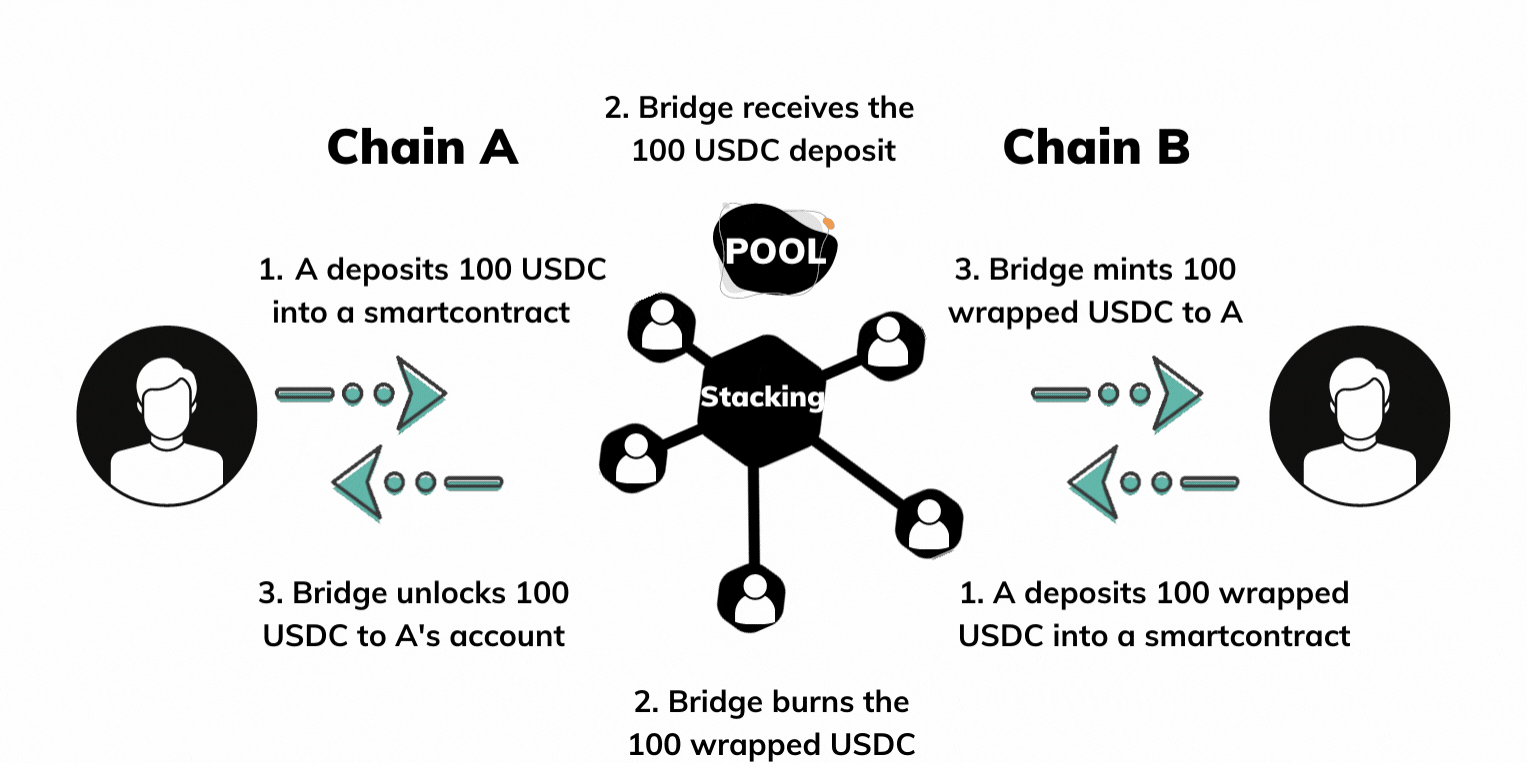What is Cross-chain Bridge?
Cross-chain bridge is a Cross-chain bridge that allows the movement of crypto assets, tokens, or data from one Blockchain to another, including layer 1, layer 2, sidechain, or child chain. In a word, Cross-chain Bridge is like a bridge to trade between ecosystems, making it possible for ecosystems to optimize the cash flow inside.

The above design has proven effective, as blockchains such as Ethereum, Bitcoin, Cosmos, Solana, etc., are all highly secure, and users can thoroughly verify their transactions on the chain. However, the different nature of each blockchain has reduced the chances of cash flow growth in Crypto and limited the ability of users to take advantage of the opportunity.
The number of Cross-chain Bridge projects is growing, proving that the number of users who need to transfer assets is very large.
How to coordinate Cross-chain Bridge
The model that is commonly used in Cross-chain Bridge is Lock-Mint-Burn

How the lock-mint-burn model works:
- Step 1: Users will deposit assets in chain A to the Bridge.
- Step 2: This Bridge will now be like a bank; when receiving the user's assets, the Bridge will mint the wrapped version of the assets on chain B for the desired wallet address.
- Step 3: When you need to withdraw assets, the user sends back the wrapped number to the Bridge.
- Step 4: Those assets will be burned, and the Bridge will unlock assets on chain A for users.
The way it works is quite simple, but when applied to bridge development, there are many different variations, among which each type will have distinct advantages and disadvantages.
Types of Cross-chain Bridge
Two types of Cross-chain bridges are Centralized Cross-chain and Decentralized Cross-chain bridges.
Centralized Cross-chain bridge:
Centralized Cross-chain bridge: There will be a 3rd party to act as a broker for the chains. They receive user tokens from one chain and then mint wrapped tokens in another chain.

- Pros: Simple to use, convenient, and suitable for new users.
- Cons: Users will depend on third parties; they have full rights to use the sender's assets.
Although the possibility of scamming users' assets is very low with big names like Binance, since the reputational damage to users will be more excellent with what they receive, there are still many other issues related to Centralized Bridge.
Decentralized Cross-chain bridge
There is no 3rd party; here, it is a pool of assets managed by the Validators. Users deposit assets from this chain into the pool; validators will verify that transaction, and the pool will mint wrapped tokens in another chain.

- Pros: Transparency because everything is verifiable on-chain.
- Cons: Not guaranteed as existing bridges are very new. Pools containing Decentralized Cross-Chain Bridge assets are suitable prey for attacks. Typically, Polynetwork was attacked by hackers and lost more than 600 million dollars.
Three outstanding types of Decentralized cross-chain bridges
Somewhat centralized bridge
Validators will control the minting and burning of wrapped tokens through a multi-sig mechanism (mostly consensus, the transaction is approved). The validators will usually be verified accounts (KYC) and know each other in real life.

This model helps prevent bad behavior by identifying validators in advance. However, this also does not guarantee that validators will not "Rug-Pull" the project.
Decentralized bridge
A decentralized bridge is developed on the Proof of Stake network and allows anyone to be a validator. These decentralized bridges usually apply the staking & slashing model; this model helps validators receive incentives when verifying transactions. Otherwise, their staked assets will be lost if lousy behavior is performed.
Untrusted bridge
These bridges are directly connected between chains. The core of an Untrusted bridge is the compatibility of the bridge with the network; it will be part of the network and inherit the security of the network. This is the type of bridge with the highest security, but it isn't easy to develop and scale to chains.

Why is cross-chain bridge important in the Crypto market?
- You can convert assets from one chain to another to use the chain's Dapps you want.
- Cross-chain Bridge's On-chain data can be used to forecast which chain the money is flowing to.
- If the future Untrusted Bridge develops and expands to chains, it will be a new era for Crypto.
Bunnybot
